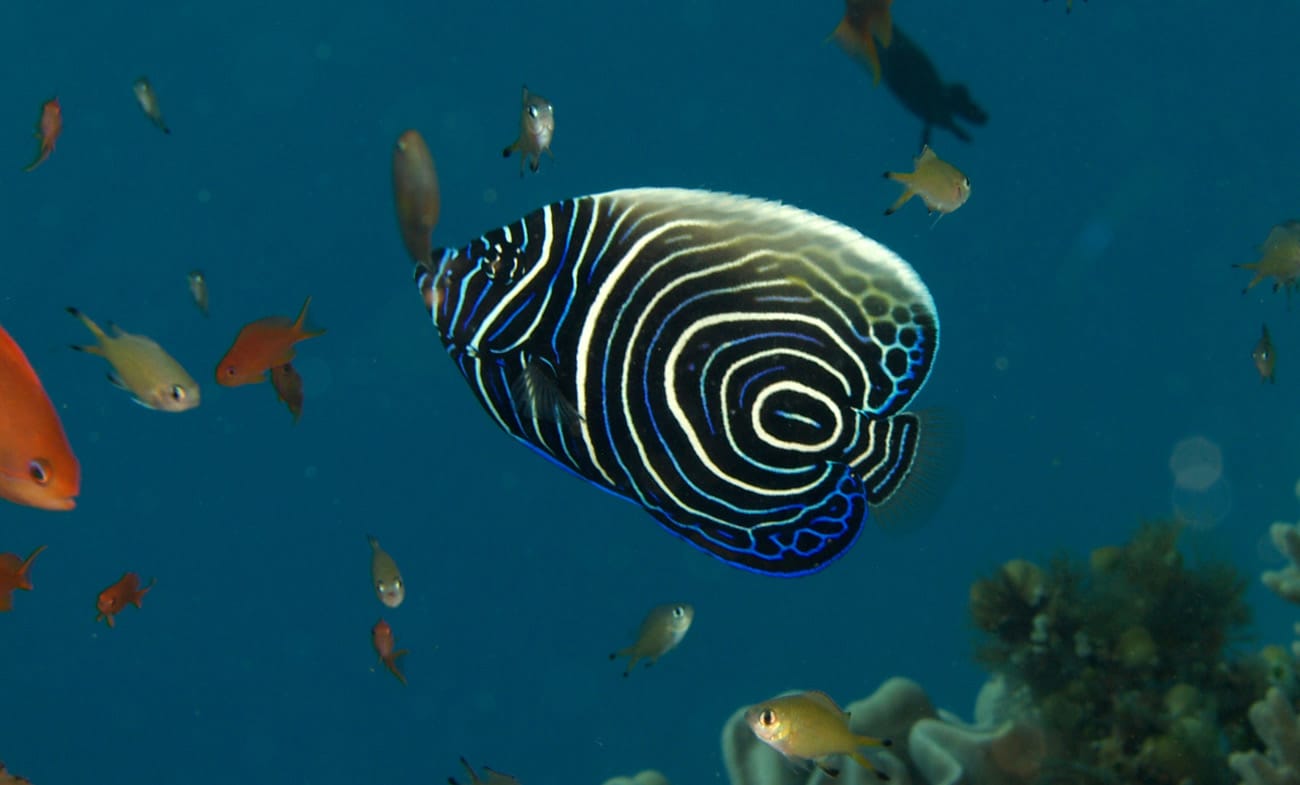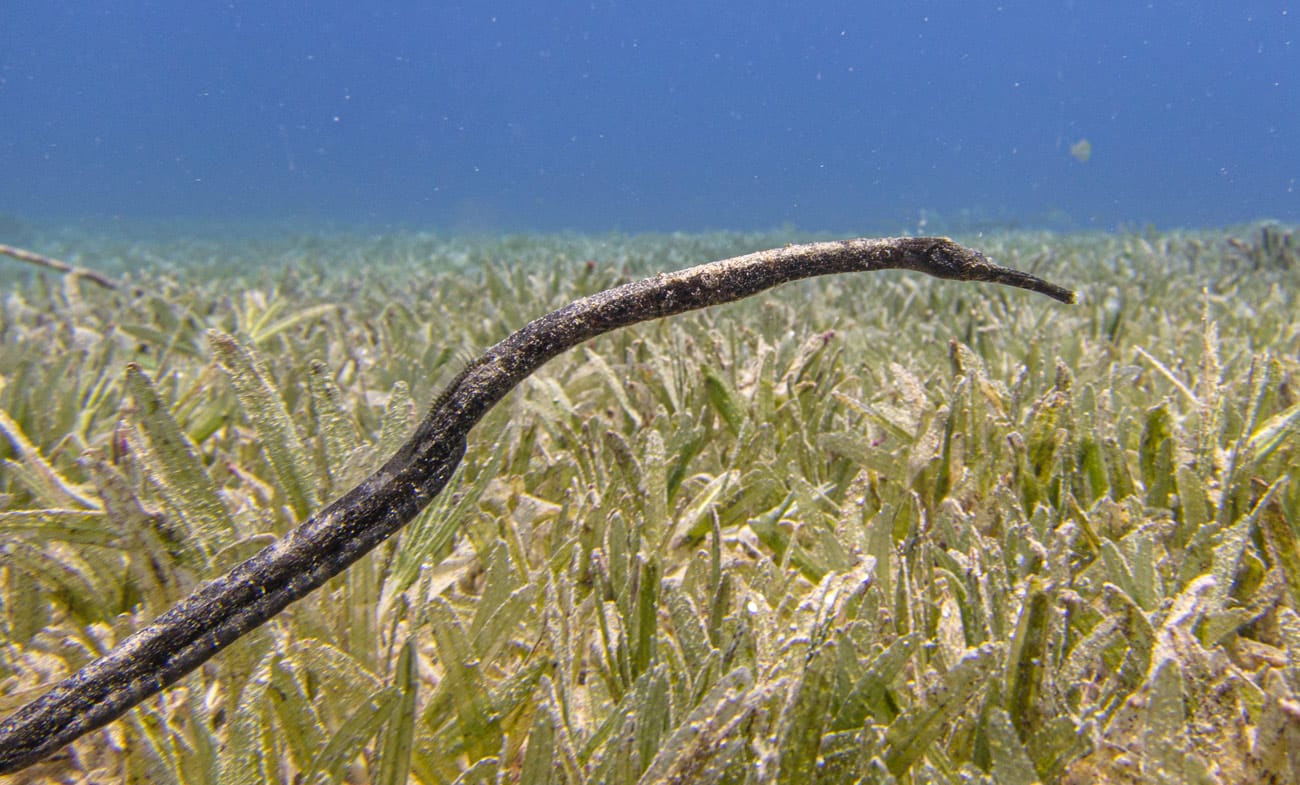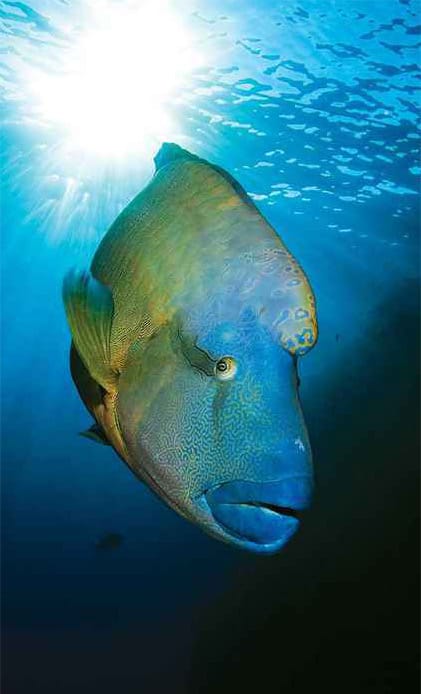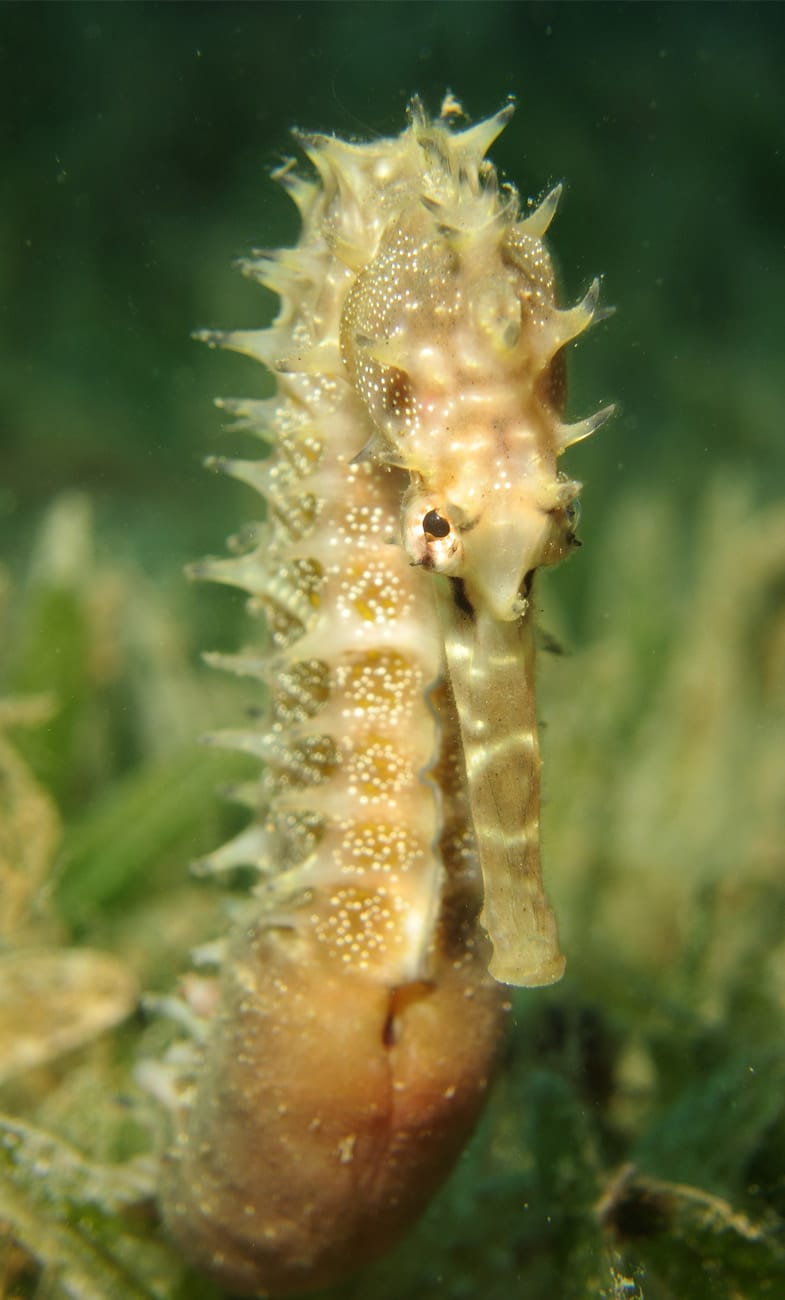
Baby Fish Season!
If you’re diving like us in the Bay for the moment, you can’t help but notice the incredible amount of juvenile fish of all species around.
Baby triggerfish (Blue and Picasso), pipefish, lionfish, butterflyfish and bannerfish hiding in bricks on the sandy patches by twos and threes; juvenile goatfish, catfish, rabbitfish and other unidentified teaming in hundreds over seagrass beds; and thousands of silversides aggregating in dense schools underneath boats and shelters, they are EVERYWHERE and they are so very cute! Hardly have we ever noticed so many juveniles at the same time: a good sign? We hope so!
Why can you find these juveniles in schools, shelters or seagrass? Juvenile fish need protection from predators. Juvenile species, as with small species in general, can achieve some safety in numbers by schooling together. Juvenile coastal fish are drawn to turbid shallow waters and to seagrass meadows and Mangroves, where they have better protection from predators. As the fish grow, their foraging ability increases and their vulnerability to predators decreases, and they tend to shift from seagrass to the open sea, where juvenile species often aggregate around floating objects such as jellyfish and seaweed.
Seagrass meadows are a very important ecosystem for fish and other marine creatures and are very important to the often adjacent coral reefs. They are made of real flowering plants (that have evolved from land some 100 million years ago and comprise 50 to 60 different species around the world, all of importance) and can grow in dense mats over lengthy areas. Seagrass also is the sole food source (with algae) of the Green Turtle and the Dugong, both found in the Red Sea.
Seagrass serves as its own unique habitat. The meadows provide canopy cover that shelters small organisms such as invertebrates and juvenile fish, including commercial fish species. Many species of algae, bacteria and plankton grow directly on the living and dead leaves. Some of these bacteria can extract nutrients (e.g. nitrogen) from the environment and make it available to bigger animals. And seagrass plants themselves help with creating a nutrient-rich environment: they take up nutrients from the soil and release them into the water through their leaves, acting as a nutrient pump. Apart from a lot of fish species, the ecosystem may be home to octopuses, squids, cuttlefish, snails, oysters, sponges, shrimps, sea fleas, worms, urchins, anemones, microalgae, crabs, clams, diatoms, dinoflagellates, copepods—the list goes on. Some of these organisms are permanent residents, while others just pass through.
Seagrass being an incredible and biodiverse environment, we’d love to show you all it hosts between it leaves of our housereef, so let’s go diving!






